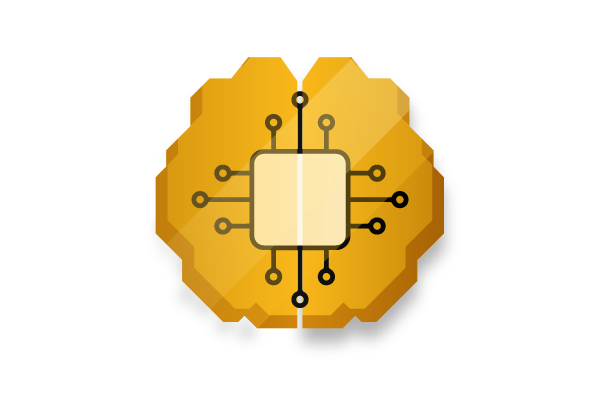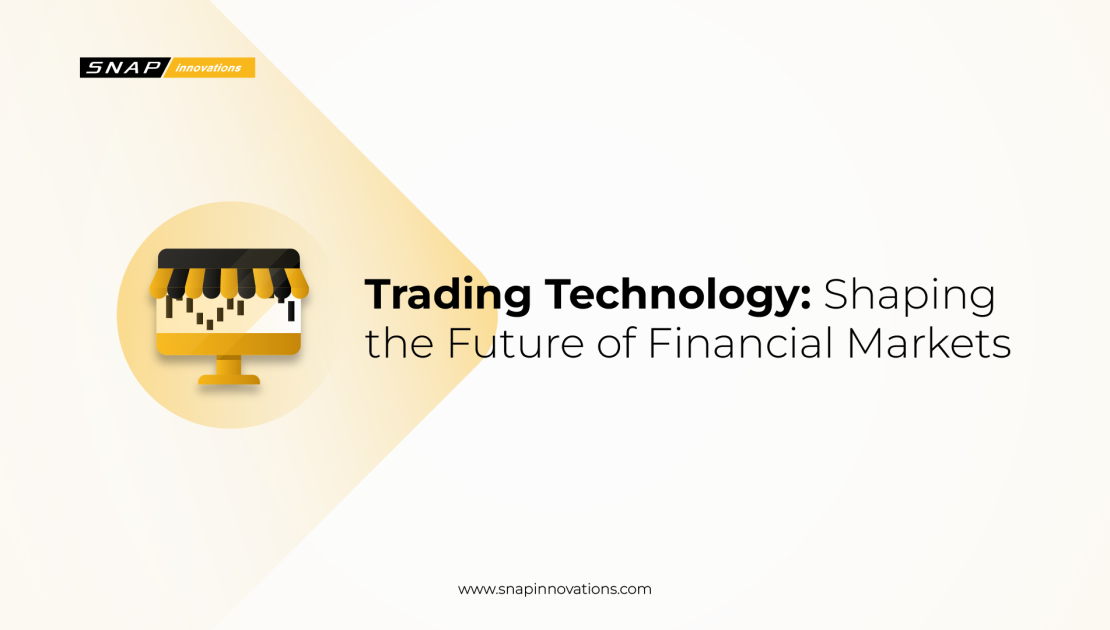The adage “time is money” has never been truer than it is in today’s fast-paced financial environment. The revolutionary impact of trading technology is altering how financial markets function. The trading industry has undergone a significant shift, moving from slow-execution platforms to those that employ sophisticated algorithms.
This article offers a comprehensive analysis of trading technology, including a look at its various applications, an examination of its subtleties, and a discussion of its significant effects on the world financial system.
What is Trading Technology?
 Trading technology encompasses a wide array of tools, software, and systems designed to streamline and enhance the trading process. At its core, it’s all about harnessing the power of digital innovation to gain a competitive edge in the financial markets. These technologies include algorithmic trading, high-frequency trading (HFT) systems, electronic trading platforms, and data analytics tools. Algorithmic trading, for instance, relies on complex mathematical algorithms to execute trades with precision and speed, capitalizing on market inefficiencies.
Trading technology encompasses a wide array of tools, software, and systems designed to streamline and enhance the trading process. At its core, it’s all about harnessing the power of digital innovation to gain a competitive edge in the financial markets. These technologies include algorithmic trading, high-frequency trading (HFT) systems, electronic trading platforms, and data analytics tools. Algorithmic trading, for instance, relies on complex mathematical algorithms to execute trades with precision and speed, capitalizing on market inefficiencies.
HFT goes one step further by making thousands of lightning-fast trades in a fraction of a second, frequently using market microstructure analysis or arbitrage opportunities. Trading using electronic platforms allows for real-time order execution and direct access to financial markets for traders. On the other side, data analytics tools leverage the power of large data to derive insights, assisting traders in making wise selections.
In conclusion, trading technology is a dynamic mix of digital innovation, data analysis, and automation that has completely changed the financial markets. Trading technology has changed the way that markets are traded, from algorithmic trading methods that execute orders precisely to high-frequency trading that moves at breakneck speed, from electronic trading platforms that provide traders access to international markets to data analytics tools that give them insights.
The Evolution of Trading Technology
The evolution of trading technology is a captivating journey through time, marked by several distinct phases that have reshaped the financial industry. Let’s dive deeper into each of these phases:
1. Electronic Trading Emergence (1970s)
With the introduction of electronic trading, the 1970s saw the beginning of a new age. The transition from open outcry trading pits, which had been the norm, to digital platforms was seismic. Greater efficiency and the capacity to carry out commands quickly were the driving forces behind this transformation. Real-time order matching and electronic exchanges were made possible by electronic trading, which also sparked a revolution in trading technology.
These pioneering electronic trading platforms, like NASDAQ, provided the groundwork for the interconnected world markets that we are familiar with today. The capacity to transact electronically across countries and time zones provided market participants with new opportunities and foreshadowed the future globalization of financial markets.
2. Electronic Communication Networks (ECNs) (1990s)
The environment for equity trading underwent a significant transformation in the 1990s with the advent of Electronic Communication Networks (ECNs). ECNs eliminated the need for intermediaries by enabling direct communication between market participants.
This idea increased transparency while also lowering trading costs by displaying real-time order book data. Due to the equal opportunity they provided for participation for institutional and individual traders, ECNs were crucial in democratizing access to the financial markets.
Also Read: What is SaaS Trading Solutions? The Future of Trading
3. Algorithmic Trading (Early 2000s)
The early 2000s marked a significant shift towards automation with the rise of algorithmic trading. Traders began deploying complex mathematical algorithms to execute orders based on predefined criteria.
These algorithms could process vast amounts of market data in real-time, identify trading opportunities, and execute trades with precision. Algorithmic trading strategies ranged from simple ones like time-weighted average price (TWAP) to highly sophisticated models that could adapt to dynamic market conditions. This development revolutionized trading by enhancing efficiency and reducing human intervention.
4. High-Frequency Trading (HFT) (Mid-2000s)
High-frequency trading (HFT) emerged as a powerhouse in the mid-2000s, pushing the boundaries of speed and precision. HFT firms invested heavily in cutting-edge technology and low-latency connections to execute thousands of trades within microseconds.
These firms sought to capitalize on minuscule price discrepancies across multiple markets and assets. While HFT brought unparalleled liquidity and rapid execution, it also raised concerns about market stability and fairness, prompting regulatory scrutiny and debates within the industry.
5. Mobile Trading (Late 2000s)
The late 2000s witnessed the democratization of trading through mobile devices. With the proliferation of smartphones and user-friendly mobile apps, retail investors gained the power to trade on the go.
Mobile trading apps provided convenience, accessibility, and real-time market data, breaking down barriers and allowing individuals to participate in financial markets from virtually anywhere in the world.
6. Big Data and Analytics (2010s)
The 2010s brought a data-driven revolution to trading. The integration of big data analytics empowered traders to process and interpret vast datasets to uncover valuable insights. Market participants could now analyze market trends, gauge sentiment, and assess trading patterns with unparalleled accuracy.
Big data analytics became an indispensable tool for crafting data-driven trading strategies, enabling traders to make informed decisions in an increasingly complex financial landscape.
7. Artificial Intelligence (AI) and Machine Learning (ML) (2010s)
The 2010s saw the infusion of artificial intelligence (AI) and machine learning (ML) into trading systems. These technologies enabled trading algorithms to adapt and learn from historical data and real-time market conditions.
AI and ML-driven strategies were capable of identifying intricate patterns, making precise predictions, and optimizing trading parameters dynamically. This era witnessed the rise of AI-powered trading bots and predictive analytics tools, further enhancing the sophistication of trading technology.
8. Blockchain and Cryptocurrency (2010s)
The emergence of blockchain technology and cryptocurrencies in the 2010s introduced a revolutionary approach to trading. Blockchain offered a secure, decentralized ledger for transparent and tamper-proof transactions.
Cryptocurrencies like Bitcoin and Ethereum created new avenues for trading, investment, and decentralized finance (DeFi). Decentralized exchanges (DEXs) and smart contracts extended the possibilities of blockchain-based trading, fostering a new era of financial innovation that challenged traditional financial systems and structures.
The evolution of trading technology paints a vivid picture of how innovation, automation, and relentless progress have shaped financial markets. Each phase has not only transformed the mechanics of trading but has also redefined the essence of the financial industry. These milestones reflect the dynamic nature of financial markets and underscore the pivotal role of technology in shaping the future of finance. As technology continues to advance, the journey of trading technology promises even greater sophistication and accessibility, opening new horizons for traders and investors worldwide.
The Role of Trading Technology in Modern Finance
 The role of trading technology in modern finance is nothing short of transformative and far-reaching, reshaping the very foundations of how financial markets operate and how participants engage with them. It serves as the bedrock of efficiency, accessibility, and innovation, underpinning the core functions of trading and investment activities worldwide.
The role of trading technology in modern finance is nothing short of transformative and far-reaching, reshaping the very foundations of how financial markets operate and how participants engage with them. It serves as the bedrock of efficiency, accessibility, and innovation, underpinning the core functions of trading and investment activities worldwide.
At its forefront, trading technology has ushered in the era of algorithmic trading, often referred to as algo trading, where complex mathematical algorithms execute trades at speeds and frequencies unattainable by human traders. These algorithms tirelessly analyze vast volumes of market data, identifying trading opportunities and swiftly executing orders based on predefined criteria. The result is not only lightning-fast execution but also the ability to adapt to rapidly changing market conditions, optimizing trading strategies in real-time. This has revolutionized the way financial instruments are bought and sold, shaping modern markets.
Furthermore, the democratization of investing and trading cannot be overstated. Thanks to trading technology, particularly through the proliferation of user-friendly mobile apps, access to financial markets is no longer the exclusive domain of financial institutions and professionals. Retail investors now have the means to actively participate in trading, allowing them to take control of their investments and financial futures. The convenience and accessibility offered by these platforms have significantly lowered the barriers to entry, enabling anyone with an internet connection and a smartphone to engage in trading activities.
The Benefits of Trading Technology
The benefits of trading technology are multifaceted, touching various aspects of trading and investment. Let’s delve into the extensive advantages, providing a more detailed exploration of each:
1. Efficiency and Speed
Trading technology has revolutionized the efficiency and speed of trade execution. Automated systems can process vast amounts of market data in real-time, allowing for orders to be matched and executed within fractions of a second.
This exceptional speed is paramount in modern markets, where even minor delays can mean the difference between profit and loss. High-frequency trading (HFT) firms, in particular, rely on split-second execution to capitalize on fleeting opportunities. The efficiency brought by trading technology allows traders to execute complex strategies swiftly, optimizing their trading outcomes.
2. Accessibility
Trading technology has democratized financial markets, granting access to a wider audience. Retail investors, previously hindered by barriers to entry, now have user-friendly online platforms and mobile apps at their disposal. This accessibility has levelled the playing field, empowering individuals to actively participate in trading alongside institutional players. It’s a seismic shift from the days when only professionals had direct market access.
Retail traders can now access a diverse range of markets, from equities and forex to cryptocurrencies, with ease. This accessibility fosters financial inclusion and allows individuals to take charge of their financial futures.
3. Reduced Costs
A notable benefit of trading technology is the significant reduction in trading costs. Gone are the days of hefty broker commissions and fees. Tighter bid-ask spreads, low transaction costs, and commission-free trading have become the norm.
These cost savings can have a substantial impact on a trader’s overall profitability, especially for high-frequency and algorithmic traders. Lower trading costs translate into higher returns on investment, making it more attractive for traders of all levels of experience and capital sizes to participate in the markets.
4. Transparency
Trading technology has ushered in an era of unparalleled transparency in financial markets. Real-time data feeds, order book visibility, and electronic execution provide traders with a comprehensive view of market activity. This transparency enhances market integrity, allowing traders to make more informed decisions based on accurate and up-to-the-minute information.
Traders can access a wealth of data, including price history, volume, and market depth, which aids in devising well-informed strategies. Additionally, the transparency promotes fair and ethical trading practices, reducing the potential for market manipulation.
5. Risk Management
Advanced risk management tools and algorithms integrated into trading technology are invaluable for traders. Features like stop-loss orders, trailing stops, and risk management rules help protect capital and mitigate potential losses.
These mechanisms instill discipline and enable traders to stay within predefined risk parameters, even in highly volatile markets. Risk management tools provide traders with an essential layer of protection, allowing them to safeguard their investments and navigate markets with confidence. By setting risk thresholds and automating risk management processes, traders can manage their portfolios effectively.
6. Globalization
Trading technology has effectively globalized financial markets, removing geographical barriers to participation. Traders can access a diverse array of asset classes and markets across different time zones. This globalization not only broadens trading opportunities but also facilitates portfolio diversification.
It enables traders to spread risk by investing in a variety of markets, reducing their reliance on the performance of a single asset or region. Globalization has opened doors to emerging markets, allowing traders to tap into opportunities in regions with high growth potential.
7. Data Analysis
Trading technology equips traders with powerful data analysis tools, enabling them to extract meaningful insights from vast datasets. Historical data analysis, sentiment tracking through sentiment analysis tools, and the development of data-driven strategies have become integral to trading success.
Traders can identify patterns, trends, and anomalies in data, helping them make informed trading decisions and improve their overall strategies. Data analysis tools provide a competitive advantage by offering a deeper understanding of market dynamics and behavior.
8. Customization
Trading technology offers an exceptional degree of customization. Traders can tailor their trading platforms to suit their unique trading styles and preferences. Whether they are day traders, swing traders, or long-term investors, customization ensures that traders can implement strategies that precisely align with their objectives and risk tolerance.
Customization extends beyond the user interface, allowing traders to define trading parameters, such as order types, position sizing, and risk management rules. This flexibility empowers traders to create a trading environment that suits their needs and preferences, enhancing their overall trading experience.
9. Market Diversity
Trading technology has broadened access to a wide range of asset classes and markets. Traders can diversify their portfolios by trading stocks, bonds, commodities, currencies, and cryptocurrencies. This diversification minimizes risk by reducing dependency on the performance of a single market or asset class.
Traders can adjust their portfolio allocations to capitalize on opportunities in different markets, helping them achieve a more balanced and resilient investment strategy. Market diversity also allows traders to take advantage of global economic trends and events.
10. Continuous Innovation
The ever-evolving nature of trading technology ensures that it remains at the forefront of innovation. Ongoing developments introduce new tools and features that enhance the trading experience.
From advanced charting and technical analysis tools to machine learning-based predictive analytics and blockchain-based trading solutions, traders can anticipate a steady stream of advancements that improve trading efficiency and outcomes. Staying informed about these innovations is essential for traders looking to maintain a competitive edge in the market.
In conclusion, the benefits of trading technology are far-reaching and have transformed the landscape of financial markets. Efficiency, accessibility, transparency, and risk management have become defining features of modern trading. As technology continues to advance, traders can look forward to even more sophisticated tools and opportunities that will shape the future.
Innovations in Trading Technology
 Innovations in trading technology represent a dynamic frontier in the financial landscape, continually reshaping how traders and investors engage with markets. Algorithmic trading, powered by machine learning and artificial intelligence, stands as a pinnacle, executing trades with unprecedented speed and adaptability. High-frequency trading (HFT) continues to redefine market microstructure, enhancing liquidity while raising questions about fairness.
Innovations in trading technology represent a dynamic frontier in the financial landscape, continually reshaping how traders and investors engage with markets. Algorithmic trading, powered by machine learning and artificial intelligence, stands as a pinnacle, executing trades with unprecedented speed and adaptability. High-frequency trading (HFT) continues to redefine market microstructure, enhancing liquidity while raising questions about fairness.
Blockchain technology has birthed cryptocurrencies, and decentralized exchanges have blurred the lines between traditional and digital assets. Mobile trading apps have made the markets portable, placing trading at users’ fingertips. Robo-advisors bring automated, data-driven portfolio management to the masses, democratizing wealth management. Artificial intelligence and machine learning unlock insights hidden within vast datasets, empowering traders with predictive analytics.
Social trading platforms foster collaboration, allowing novices to emulate experts. RegTech simplifies compliance, streamlining regulatory adherence. Quantitative and systematic trading strategies find automation through technology. Real-time analytics provide instantaneous market insights, enabling traders to make timely decisions. The future promises quantum computing, asset tokenization, and heightened cybersecurity as technology continues to transform financial markets, making staying informed of these innovations crucial for traders and investors.
The Future of Trading Technology
The future of trading technology holds a myriad of transformative trends and possibilities that promise to reshape how traders and investors interact with financial markets. From the potential of quantum computing to revolutionize risk assessment and trading speed to the tokenization of real-world assets offering increased liquidity, the horizon is ablaze with innovation.
Enhanced cybersecurity measures, decentralized finance (DeFi) platforms, and the augmentation of traders’ capabilities with artificial intelligence are poised to redefine security, accessibility, and decision-making. Predictive analytics, market surveillance, and a deeper integration of Environmental, Social, and Governance (ESG) factors into trading strategies will set new standards for market participation.
Read More: Order Management : Technologies and Challenges
As globalization and diversification options expand, biometric authentication enhances security, and mobile trading ventures into virtual reality realms, traders will find themselves in a dynamic and interconnected market environment. This evolution, coupled with ongoing regulatory adaptations, underscores the need for traders and investors to remain vigilant and adaptable in navigating the ever-changing landscape of trading technology.
Conclusion:
Trading technology has ushered in a new era in financial markets, where speed, efficiency, and accessibility are paramount. From its humble beginnings in electronic trading to the cutting-edge algorithms and AI-driven strategies of today, trading technology has transformed how we buy and sell financial assets.
As it continues to evolve, it will shape the future of finance, offering both opportunities and challenges for market participants, regulators, and investors alike. In this dynamic landscape, staying informed and adapting to the latest innovations will be key to navigating the exciting world of trading technology.

